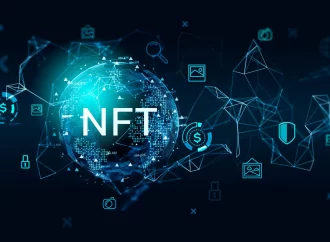It has become a common business cliché: Data are the new natural resources. And it’s almost true. Businesses have an unprecedented opportunity to use the data explosion of the digital era to discover new ways to better serve their customers. It is possible that data may not always match our expectations, but it is still more reliable
It has become a common business cliché: Data are the new natural resources.
And it’s almost true. Businesses have an unprecedented opportunity to use the data explosion of the digital era to discover new ways to better serve their customers. It is possible that data may not always match our expectations, but it is still more reliable than guesswork and opinion.
Many don’t realize how they’re making an already difficult situation worse by collecting data on click and convert rates, search statistics, and other requests or preferences through apps, websites, and customer service interactions.
Digital Experiences for Understanding
How can this be? As the world moves to primarily digital experiences companies have already been assigned to try to understand customers that they seldom see or talk to. Big data can only make it more difficult to understand customers than traditional, personal methods.
This is how we end-up with organizations that claim they’re customer-centric. Ouch.
Companies don’t have any choice but to discover the best way to better understand customers to anticipate and support them and deliver exceptional experiences. That’s simply market reality.
Consumer expectations have never been greater, as you can see. Many businesses offer similar products, which is why the digital marketplace is full of them. With so many choices available, people can move their money around with just one mouse click or tap of their smartphone.
Consumers today are comparing their experiences
Consumers are now more inclined to compare the experiences they have with the same brand, product, or service, as well as across different categories. Online shoppers may be able to compare their shopping experience with the experience they had when they booked a table at a restaurant through an app. While they may be different beasts, consumers don’t mind: They expect the exact same quality.
Customer experience is the most important differentiation and loyalty driver in today’s digital economy. Is it easy for them to feel heard and valued on a personal basis? Can they create a new Account easily? Are they able to use the app easily, efficiently, and enjoy it?
Customers Love the Best Experiences, Even at a High Cost
Research shows that customers are drawn to companies that offer great experiences. Customers also tend to stick with companies that offer similar products and deliver them quickly or at a lower price. The business with the best experience, and who creates an authentic connection, usually wins.
It can be costly and overwhelming to keep up the pace with customer demand. Organizations have tapped into huge customer data inventories.
This makes it feel more efficient. Many business leaders have been trained to believe that the numbers are all they need for making sound business decisions. Companies spend significant money on heavy data collection and analysis machines, and then they trust only the numbers.
But there’s a problem.
Here are a few examples
Analytics allows you to see customer behavior and can identify potential areas for improvement. They don’t give customers an intimate, emotional view of their lives. Customers are seen as data points and not human beings, so companies cannot make an accurate guess about their customers’ thoughts.
The B2B market and CRM systems
CRM systems are widely used in B2B to answer the question, “What am I doing for my customer?” Most businesses wouldn’t be able to function without these systems for managing customer information. Problem is, these systems are only able to provide information about customers from the company’s perspective.
They don’t collect information about users. All data is viewed through the company’s lens, which is self-serving.
Surveys
What about all those surveys that consumers are continually asked to fill in? These surveys can offer insight into the customer’s experience. But surveys can be problematic because of several reasons. For example, survey fatigue can limit returns and generalized responses lack the kindof subtle feedback which can be revelatory. There is also the possibility of bots infiltrating surveys online.
These techniques are missing a crucial perspective: What it is really like to be in a customer’s shoes. None of them are deep enough or offer enough perspective to provide a company with a genuine, deep understanding of what attracts and secures loyal customers.
Will the actual customer please stand up?
To get a complete picture about multidimensional, clearly human customers, companies will need to use data to match customer perspectives with their own.
Building customer experience narratives requires you to observe, sometimes converse, with customers, listen to what they have to say, how they say it (sentiment. pace. intonation), note facial expressions, body language, and any other signals that could be used by humans to show delight, frustration, motivation.
The ability of a company to see the human beings for whom they are creating experiences is what sets them apart in an era where customers have unprecedented choices and enormous power.
Businesses risk creating products no one needs, making uninformed choices about current offerings, becoming increasingly disconnected from the people they serve, and risk a lack of trust.
Conclusion
Clear communication is key to fostering memorable customer experiences. Data alone will not do this. Data can help provide the big picture, generally in the form trend and pattern data. But customer narrative input adds color to the picture and provides context.


















